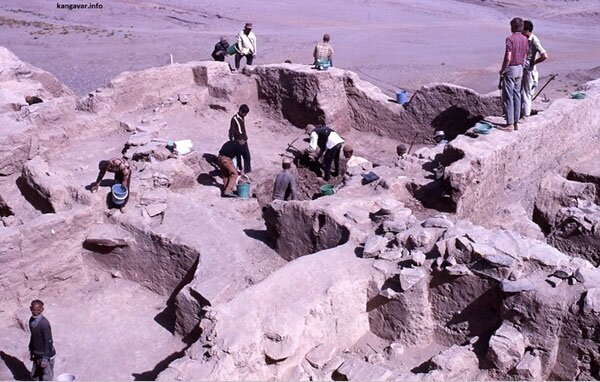7,000-year-old Godin Tepe has tourism potential, archaeologist says

TEHRAN - Iranian archaeologist Morteza Geravand has emphasized the untapped potential of Godin Tepe, an ancient settlement dating back to 5,000 BC, as a significant cultural and tourism destination.
Situated in Kangavar Valley between Hamadan and Kermanshah, this historical site “has been largely neglected for nearly six decades, despite its importance in Iran’s archaeological heritage”.
Speaking to local media, Geravand, who also heads the Anahita Temple National Base, highlighted Godin Tepe’s role as a major trade hub in ancient times. “This site was situated along a key commercial route, serving as a trading post for exchanges between Mesopotamia and even southern Iran,” he explained.
Excavations at Godin Tepe have revealed evidence of human occupation from prehistoric periods through the Islamic era. During the Median period, a fortress was constructed at the site, likely serving as an administrative or military center. Despite its historical significance, Geravand expressed concern over the site’s current state, noting that while other ancient sites from the same era, such as Tepe Sialk in Kashan, Nushijan in Malayer, and Hasanlu in West Azarbaijan province, have been developed into research and tourism centers, Godin Tepe has been left unattended.
The site was excavated by a Canadian archaeological team nearly 60 years ago. Since then, no further excavations have taken place, and many of the structures uncovered at that time have deteriorated. Recent efforts have been made to define the site’s boundaries, but funding constraints have hindered conservation work.
Geravand estimated that an initial budget of approximately one billion tomans (some $11,000) is required for site preservation and interpretation, with further investments needed for its full development as a research and tourism hub. He stressed that with adequate support, Godin Tepe could become a major cultural attraction, bringing economic benefits to the underdeveloped eastern region of Kermanshah province.
“While Kermanshah is known for [treasured] sites like [the UNESCO-registered] Bisotun and Taq-e Bostan, many important historical landmarks in the eastern part of the province remain underappreciated,” he noted, calling for greater attention to the region’s cultural heritage.
Godin Tepe, also known as Tappeh Imamzadeh, is located near the town of Godin in Kangavar county. It was registered on Iran’s National Heritage List in 1965.
Advocates like Geravand hope that with further investment and recognition, it may one day receive UNESCO World Heritage status, placing it among Iran’s most valued archaeological sites. “Godin Tepe is worthy of gaining a UNESCO status,” the archaeologist announced in October 2023.
The major occupation periods at Godin have been classified as Periods XI-VI (c. 5200-3800 BC); Period VI: phases 3-1 (c. 3800-3000 BC) (note that Period VI:1 was called Period V in early reports of the site); Period IV: phases 2-1 (c. 2800-2600 BC); Period III: phases 6-1 (2600-1400 BC); and Period II: phases 2-1 (c. 800-500 BC).
According to World History Encyclopedia, the site was a Sumerian settlement first inhabited c. 5000 BC, which comprised a village and a fortress. It became an important stop along the Great Khorasan Road trade route, better known as the Silk Road, which was the major avenue for trade for close to 3,000 years. (The term “Silk Road” was first coined in 1877 by the German geographer Baron Ferdinand von Richthofen in reference to the trade of Chinese silk).
AM
Leave a Comment